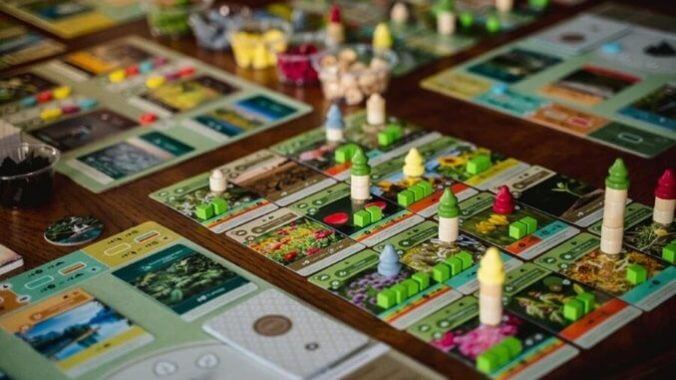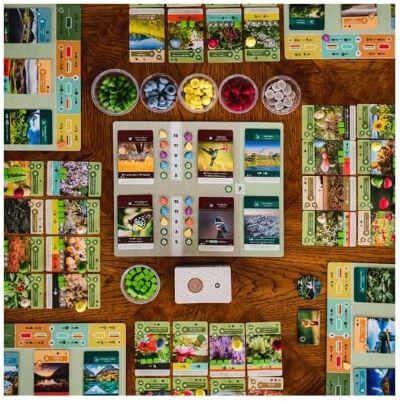Earth Board Game Review: The Best New Game of 2023

Earth is probably the hottest new board game of 2023, a strong favorite to win one of the Spiel des Jahres (game of the year) awards, and certainly the best new game I’ve played so far this year. It takes everything that’s good about the game Wingspan and makes it all more so, resulting in a gaming experience that’s a little more complex but also provides the satisfaction of building an engine that gets more powerful as the game progresses.
In Earth, players will play cards from their hands to their personal tableaux, building a 4×4 grid of cards showing flora (plants) and terrains that have powers that will be activated over the remainder of the game. Some cards have immediate powers, but most have powers that you can use repeatedly when players choose certain actions on their turns, and choosing cards that have the right powers and that you’ll be able to invoke more often is a huge part of Earth strategy. You’ll pay soil to play cards, and then you can water those cards to create sprouts, add growth to cards, or discard cards from your hand or the deck to your compost pile, which can then be used to create more soil or to fulfill other card requirements.
The goal here is to amass the most victory points, with at least eight different ways to get them in Earth. Most cards are worth victory points at the end of the game, as are the growth and sprout spaces you can fill on cards. A few cards in the deck grant more end-game points, often based on what cards are near it in your tableau. You’ll also try to achieve four public objectives and one private one for more points at game-end. And you get points for all the cards you composted during the game.
There are four main actions in Earth, each color-coded and represented by a unique icon for accessibility. The active player chooses one of those actions, and then all other players get to execute the same action. If you choose to Plant, you play up to two cards from your hand to your tableau, as long as you can pay their soil costs. If you Compost, you gain 5 soil and place two cards from the deck directly to your compost pile. (You do not need to turn your compost pile in Earth, although I suppose you could just to be more realistic.) You can Water, placing up to six sprout cubes on cards that have room for them and gaining two soil. If you choose Growth, you draw four cards to your hand and then place two growth tokens on growth spaces on any cards with room remaining. Non-active players get to do the same action, but their benefit is less—they plant one card rather than two, they gain either two growth or two cards, etc.
